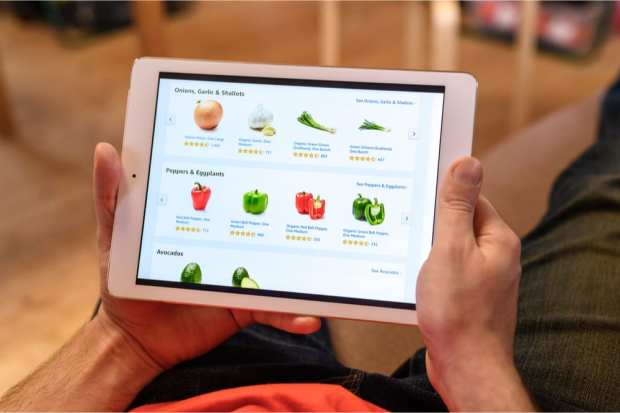Grocery Loyalty Evolves With Digital Shift

Customer loyalty is evolving with the acceleration of Digital 3.0, led by the category that has been most affected by the digital shift: grocery. With competition heating up from Walmart, many large grocery chains are connecting their once offline program to online accounts.
For example, Verizon is now partnering with Walmart to accelerate online grocery buying. Verizon media on Monday (July 20) announced the launch of “Groceries from Walmart,” which will provide a direct connection from the Mail app as well as a shopping app announced last year. The value proposition, according to Verizon, is that Yahoo Mail users can browse, add to cart, and buy groceries from Walmart within Yahoo Mail. Verizon claims that it’s the “first time ever that email users can fill a shopping cart from their inbox, streamlining their shopping experience from within the mail app they use daily to track promotions, coupons, and more.”
Last year, Yahoo Mail debuted an app which included a feature called Grocery View, which shows users deals at local stores, enables saving them to their shopping lists, as well as connect their store loyalty card to automatically saved coupons at the cash register. They can also order for curbside pickup. The company says the total audience for the app is more than 900 million users. As a comparison, Google’s Gmail has reported 1.4 billion users.
“Because of the unprecedented coronavirus challenge, online grocery shopping is now the new normal and Verizon Media is well positioned to take advantage of the behavior shifts,” said Guru Gowrappan, CEO, Verizon Media in a statement.
“The pandemic has forced consumers to change the way they shop for groceries and as a result, they are now habituated to continue shopping online rather than in-store,” Bindu Gupta, Loyalty and Marketing Strategist at Comarch, told newsletter Loyalty 360. “This trend is likely to continue post-crisis as well. Grocers have to align their loyalty programs accordingly by ensuring new ways to earn and redeem their loyalty currency with a strong focus on personalization. This strategy will be imperative for grocers to retain their customers in the midst of increased competition from direct-to-consumer brands.”
Major chains have connected their loyalty programs to features like curbside pickup options. For example, in May Aldi announced it was rolling out curbside pickup to 600 stores, as well as expanding its home delivery options in 35 states. Food Lion, owned by the Ahold Delhaize conglomerate, announced in June that customers who use Food Lion To Go for pickup or delivery can use digital coupons for their “Shop and Earn” MVP rewards program member savings.
Says industry newsletter Loyalty 360: “With many grocers focusing on digital to better position themselves for the short and long terms, loyalty will also be a key focus, especially with the rise of third-party services such as Instacart that may disrupt the brand’s traditional relationship with customers.”
Loyalty programs are of course not limited to brick-and-mortar stores. Online retailers have also tied loyalty programs to brick-and mortar stores as Amazon Prime has done with its Whole Foods subsidiary.
“With technological advancements, loyalty programs are not limited to certain types of business,” says loyalty program site The Wise Marketer. “Omni-channel engagement can be implemented by wholesalers, retailers, and e-commerce stores. The loyalty program structure will differ, but the ending value a loyalty program delivers is the same regardless of the kind of business. Successful loyalty programs deliver improved customer engagement and retention, reduction in competitive pressure, and an increase in revenues.
